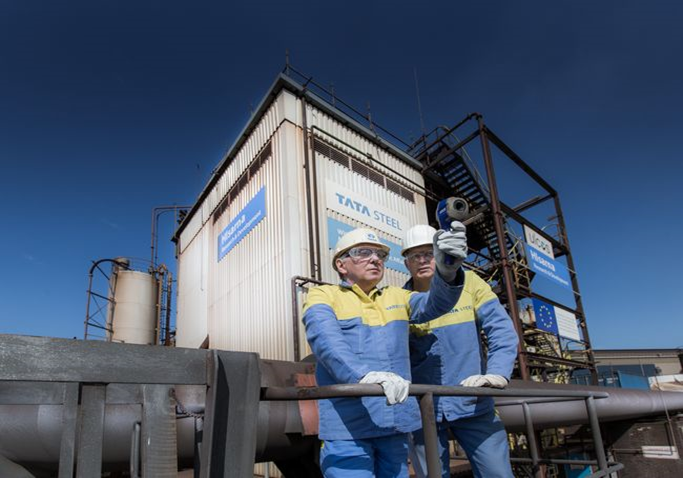The name is based on a mix of “Hismelt” (the name of the melting vessel) and “Isarna” (the ancient celtic word for iron). Smelting reduction combines elements of the smelting process (extraction of metal from its ore using heat and a reductant) and coal gasification. Iron ore is input without pelletizing or sintering, and is smelted into liquid pig iron within the same reactor.
At the top of the reactor (called the CCF cyclone), iron ore is injected directly as a powder. The temperature is increased by the addition of oxygen which reacts with carbon monoxide. The turbulent environment in the cyclone allows greater contact time between the hot gases and the iron ore. This leads to melting and partial reduction of iron ore in the cyclone, typically in the range of 10-20% (Junjie, 2018).
The molten and partially reduced iron ore then falls to the bottom of the vessel (the smelting bath) and comes into contact with coal powder which is injected at the bottom of the reactor. The reaction of carbon from the powder coal with the molten iron ore completes the reduction and creates liquid iron (and CO2 emissions). The resulting CO2 emissions are a relatively pure stream (~85-95% CO2), which facilitates capture. The temperature in the smelter is around 1400-1450 °C (Junjie, 2018; Tata Steel 2013).
The partially combusted gases leave the smelter section of the reactor and circulate upwards to provide hot fuel gas to the cyclone. The liquid iron (also called hot metal or pig iron) is then tapped off at the bottom for further processing (Tata Steel, 2018).
The molten, carbon-rich (4-5%) pig iron (also referred to as hot metal) that is produced in the HISarna reactor is then oxidized in a basic oxygen furnace, in an exothermic oxidation reaction as pure, hot oxygen is blown over the metal, to reduce the carbon content to below 2% (often less than 1%, depending on final product specifications). Liquid crude steel is then tapped from the furnace, and slag (a byproduct, a mixture of metal oxides) removed. Slag can be used as an additive to cement, creating concrete mixtures with advantageous properties and reducing the amount of Portland cement needed, or can be sold for liming purposes to the agricultural sector.
The process also produces off-gases from the basic oxygen furnace with energy content that can be used. Their composition and calorific value is shown below. They can be used to produce heat and power, and/or used as a feedstock for chemical production.
Basic oxygen furnace gas: 57% CO, 14% CO2, 14% N2, 12% H2O, 3% H2; 7.5 MJ/normal cubic meter (LHV)
All information in the datasheets is also available in ESDL (Energy System Description Language). You can find them in the Energy Data Repository (EDR).
